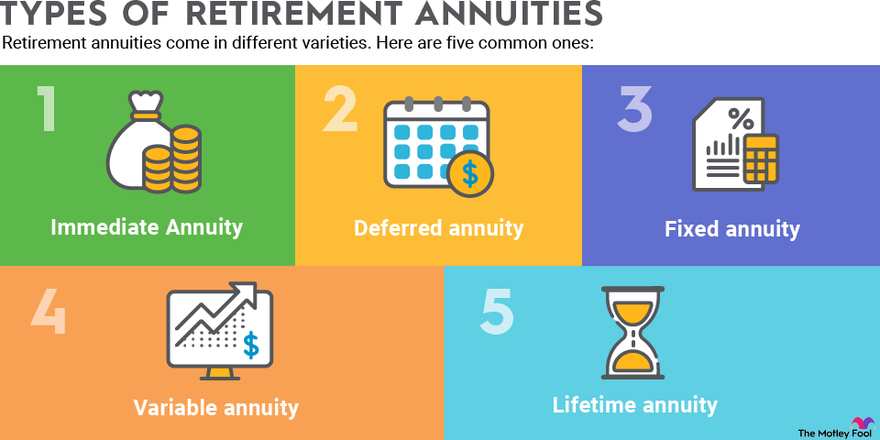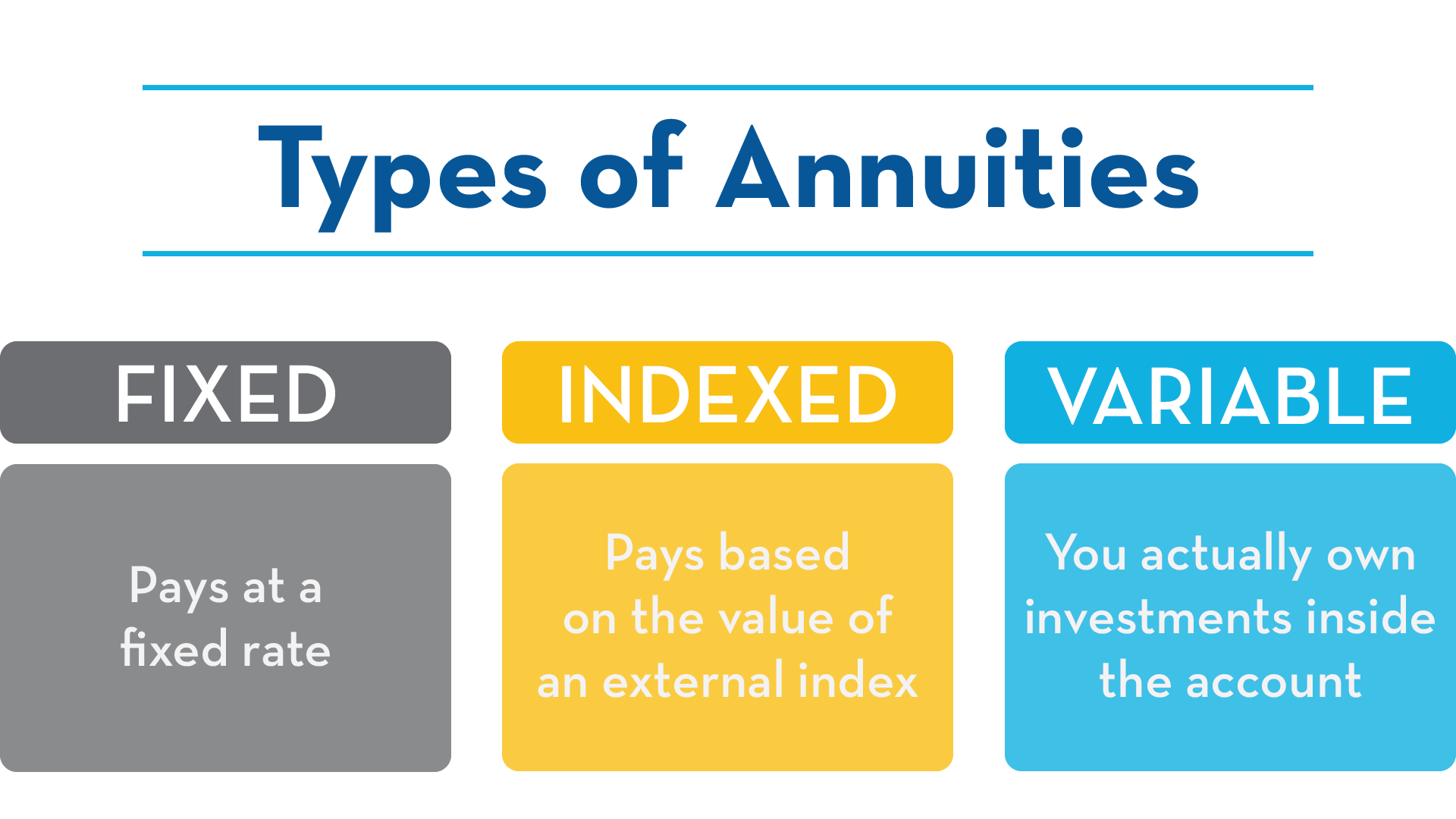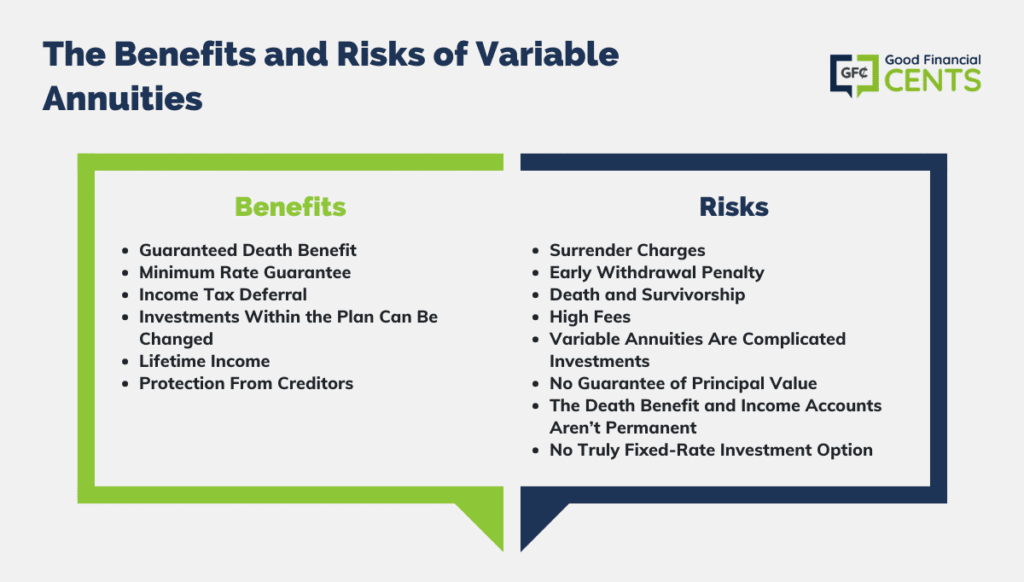All Categories
Featured
Table of Contents
Simply as with a taken care of annuity, the proprietor of a variable annuity pays an insurance provider a round figure or series of repayments for the guarantee of a collection of future repayments in return. As pointed out above, while a dealt with annuity grows at a guaranteed, continuous price, a variable annuity expands at a variable rate that depends upon the efficiency of the underlying financial investments, called sub-accounts.

Throughout the buildup stage, properties invested in variable annuity sub-accounts grow on a tax-deferred basis and are exhausted only when the contract owner takes out those profits from the account. After the accumulation phase comes the earnings stage. Over time, variable annuity possessions need to in theory boost in worth till the contract owner decides he or she want to begin taking out money from the account.
The most significant problem that variable annuities typically existing is high expense. Variable annuities have several layers of fees and expenses that can, in accumulation, produce a drag of as much as 3-4% of the agreement's worth every year. Below are the most common fees related to variable annuities. This cost makes up the insurance firm for the threat that it thinks under the regards to the contract.
Analyzing Variable Annuity Vs Fixed Indexed Annuity Key Insights on Your Financial Future Breaking Down the Basics of Fixed Vs Variable Annuity Advantages and Disadvantages of Choosing Between Fixed Annuity And Variable Annuity Why Choosing the Right Financial Strategy Is a Smart Choice Fixed Vs Variable Annuity: Simplified Key Differences Between Different Financial Strategies Understanding the Rewards of Immediate Fixed Annuity Vs Variable Annuity Who Should Consider Strategic Financial Planning? Tips for Choosing Variable Vs Fixed Annuity FAQs About Fixed Vs Variable Annuity Common Mistakes to Avoid When Planning Your Retirement Financial Planning Simplified: Understanding Indexed Annuity Vs Fixed Annuity A Beginner’s Guide to Variable Annuity Vs Fixed Indexed Annuity A Closer Look at How to Build a Retirement Plan
M&E expenditure fees are calculated as a percentage of the agreement worth Annuity issuers pass on recordkeeping and various other management costs to the contract owner. This can be in the kind of a flat yearly fee or a percent of the agreement value. Administrative costs may be included as component of the M&E risk cost or may be analyzed independently.
These charges can vary from 0.1% for easy funds to 1.5% or even more for actively managed funds. Annuity contracts can be customized in a number of methods to offer the certain needs of the agreement owner. Some common variable annuity motorcyclists include guaranteed minimal build-up benefit (GMAB), assured minimum withdrawal advantage (GMWB), and ensured minimal revenue benefit (GMIB).

Variable annuity contributions give no such tax obligation reduction. Variable annuities often tend to be extremely inefficient cars for passing wealth to the future generation because they do not delight in a cost-basis modification when the initial contract owner passes away. When the proprietor of a taxable financial investment account passes away, the expense bases of the investments held in the account are changed to mirror the market prices of those financial investments at the time of the proprietor's death.
Highlighting the Key Features of Long-Term Investments Everything You Need to Know About What Is Variable Annuity Vs Fixed Annuity Defining the Right Financial Strategy Benefits of Choosing the Right Financial Plan Why Fixed Annuity Vs Variable Annuity Can Impact Your Future Immediate Fixed Annuity Vs Variable Annuity: How It Works Key Differences Between Different Financial Strategies Understanding the Rewards of Annuity Fixed Vs Variable Who Should Consider Fixed Interest Annuity Vs Variable Investment Annuity? Tips for Choosing the Best Investment Strategy FAQs About Planning Your Financial Future Common Mistakes to Avoid When Choosing a Financial Strategy Financial Planning Simplified: Understanding Your Options A Beginner’s Guide to Fixed Index Annuity Vs Variable Annuity A Closer Look at Variable Annuities Vs Fixed Annuities
As a result, beneficiaries can acquire a taxable investment profile with a "fresh start" from a tax point of view. Such is not the instance with variable annuities. Investments held within a variable annuity do not obtain a cost-basis modification when the original owner of the annuity passes away. This indicates that any kind of collected latent gains will certainly be handed down to the annuity owner's successors, along with the associated tax problem.
One substantial issue associated with variable annuities is the capacity for problems of rate of interest that may exist on the component of annuity salespeople. Unlike a monetary consultant, who has a fiduciary task to make investment decisions that profit the customer, an insurance policy broker has no such fiduciary responsibility. Annuity sales are extremely rewarding for the insurance policy specialists that sell them because of high upfront sales commissions.

Several variable annuity contracts consist of language which places a cap on the percent of gain that can be experienced by particular sub-accounts. These caps stop the annuity owner from totally getting involved in a part of gains that might otherwise be enjoyed in years in which markets produce considerable returns. From an outsider's perspective, presumably that financiers are trading a cap on investment returns for the previously mentioned ensured flooring on investment returns.
As noted over, surrender charges can seriously restrict an annuity owner's ability to move assets out of an annuity in the very early years of the contract. Better, while most variable annuities permit contract proprietors to take out a defined amount throughout the accumulation stage, withdrawals past this amount generally result in a company-imposed cost.
Withdrawals made from a fixed passion price financial investment option might likewise experience a "market price adjustment" or MVA. An MVA changes the value of the withdrawal to mirror any type of changes in rates of interest from the moment that the cash was invested in the fixed-rate alternative to the moment that it was taken out.
:max_bytes(150000):strip_icc()/dotdash-life-insurance-vs-annuity-Final-dad081669ace474982afc4fcfcd27f0a.jpg)
Frequently, also the salesmen who sell them do not completely understand just how they function, and so salesmen in some cases take advantage of a purchaser's feelings to market variable annuities as opposed to the benefits and suitability of the items themselves. Our company believe that capitalists ought to totally understand what they have and just how much they are paying to own it.
Highlighting Variable Vs Fixed Annuities A Comprehensive Guide to Retirement Income Fixed Vs Variable Annuity Defining Variable Annuity Vs Fixed Indexed Annuity Benefits of Choosing the Right Financial Plan Why Fixed Interest Annuity Vs Variable Investment Annuity Is Worth Considering How to Compare Different Investment Plans: Explained in Detail Key Differences Between Fixed Annuity Vs Equity-linked Variable Annuity Understanding the Rewards of Long-Term Investments Who Should Consider Deferred Annuity Vs Variable Annuity? Tips for Choosing the Best Investment Strategy FAQs About Planning Your Financial Future Common Mistakes to Avoid When Choosing a Financial Strategy Financial Planning Simplified: Understanding Fixed Annuity Or Variable Annuity A Beginner’s Guide to Pros And Cons Of Fixed Annuity And Variable Annuity A Closer Look at Variable Annuity Vs Fixed Indexed Annuity
The exact same can not be stated for variable annuity assets held in fixed-rate investments. These properties lawfully belong to the insurance provider and would certainly therefore go to threat if the firm were to fall short. Any assurances that the insurance company has actually concurred to give, such as an ensured minimum income benefit, would be in inquiry in the event of a service failing.
For that reason, potential purchasers of variable annuities must understand and take into consideration the economic problem of the releasing insurance firm before entering into an annuity agreement. While the benefits and drawbacks of numerous kinds of annuities can be questioned, the actual concern bordering annuities is that of suitability. In other words, the concern is: who should own a variable annuity? This question can be tough to respond to, given the myriad variants available in the variable annuity universe, but there are some fundamental guidelines that can help investors choose whether or not annuities must contribute in their financial strategies.
As the stating goes: "Purchaser beware!" This write-up is prepared by Pekin Hardy Strauss, Inc. Comparing fixed annuity rates. ("Pekin Hardy," dba Pekin Hardy Strauss Wealth Management) for educational purposes only and is not planned as an offer or solicitation for service. The details and data in this post does not constitute lawful, tax, accounting, financial investment, or various other professional recommendations
Table of Contents
Latest Posts
Breaking Down Fixed Indexed Annuity Vs Market-variable Annuity Everything You Need to Know About Financial Strategies Breaking Down the Basics of Investment Plans Features of Variable Annuity Vs Fixed
Decoding How Investment Plans Work A Comprehensive Guide to Fixed Annuity Or Variable Annuity What Is the Best Retirement Option? Features of Smart Investment Choices Why Variable Annuity Vs Fixed Ind
Exploring Annuities Variable Vs Fixed Key Insights on Your Financial Future Breaking Down the Basics of Investment Plans Benefits of Indexed Annuity Vs Fixed Annuity Why Choosing the Right Financial S
More
Latest Posts